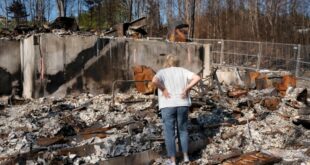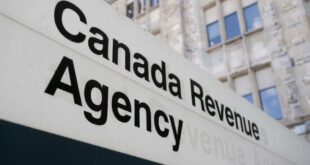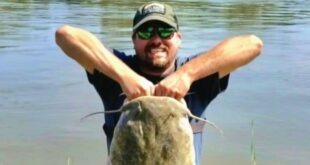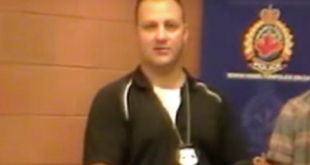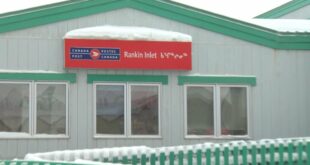Bird dog aircraft, duff and fire whirls are just some of the specialized terms firefighters use.
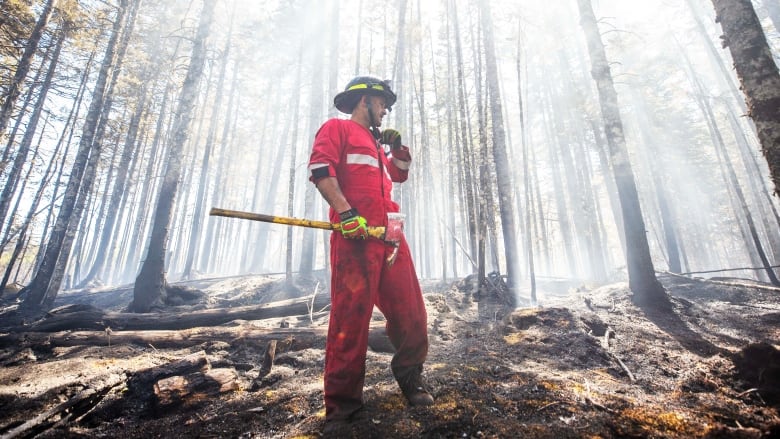
With wildfires raging throughout Canada, some of the strategy and lingo discussed at briefings and on the news can be a mystery to people. Firefighters in different communities sometimes use different terminology for the same phenomenon, complicating matters.
The Canadian Interagency Forest Fire Centre (CIFFC), which helps provinces and territories share firefighting resources, has long maintained an extensive glossary of wildfire terminology that helps ensure everyone is speaking the same language. It’s essential when firefighters are moving between provinces — and even between countries — to battle flames. Several provinces also have glossaries online, including British Columbia and Nova Scotia.
“Whenever you have a specialized discipline, it’s important that you agree on the terminology,” said David Martell, a professor emeritus at the University of Toronto who specializes in forest fire management systems.
We consulted the guides and wildfire experts to develop a list of the most unique and common terms you might hear during wildfire season.
Bird dog aircraft
A bird dog plays a critical role in firefighting from the sky. This airplane carries the air attack officer, the person in charge of directing all aerial operations during a wildfire. The bird dog flies above the tanker aircraft and directs them where to dump water to ensure they hit the best spot. Manitoba recently sent a bird dog aircraft and air attack officer to fight fires in Alberta, among other resources.
Canadian Forest Fire Danger Rating System
The CFFDRS is a national system that rates the risk of forest fires in any given area. It was established in 1968, but some of its origins date back to the 1920s. You might recognize it from visiting a wooded area.

The signs are easy to understand, and they’re the most useful indicator of fire risk for most people, Martell said. And while it looks simple, a lot of information is used to determine fire risk, including weather, wind speed, the dryness of potential fuel in a forest (such as dead pine needles), topography, how fast a fire would spread and much more.
Crossover
This term started popping up during fire briefings in Nova Scotia this week, and it’s a dangerous one in the firefighting world. It’s an indication of extreme burning conditions.
“Normally the humidity is higher than temperature, but when the humidity is lower than temperature, then you have what’s called crossover,” Martell said. “You’re going to have fire problems on a day like that.”

Why the ‘phenomenon of crossover’ could mean a tough day for N.S. firefighters
Given the environmental conditions, fire officials say that residents of the evacuation zone in Upper Tantallon should not expect to return home Wednesday.
Crown fire
This doesn’t refer to a fire on Crown land. Rather, it’s a fire that spreads from the forest floor to the crowns (or tops) of trees, said Michael Flannigan, a professor of wildland fire at Thompson Rivers University in Kamloops, B.C. A fire can quickly spread from treetop to treetop, feeding on branches, twigs and pinecones.
Fireguard
This is an important way to stop or slow down a fire — it’s when crews clear a strategic barrier by removing trees and shrubs, robbing a fire of any more fuel. This is where the dozer boss works. While that may sound like a reference to Fraggle Rock, the dozers in this case are actually destroyers rather than builders. The dozer boss oversees the bulldozers working to clear an area to ensure the fireguard is constructed efficiently and effectively. Fireguards can also be natural barriers to fire, such as roads.
Fire whirls and firebrands
Fire whirls are spinning columns of hot air, flames and gases that can help expand a fire’s perimeter. They can let loose firebrands — flaming or smouldering embers that carry on the wind.
They can be smaller than a metre to several hundred metres in diameter, when they are often called fire tornadoes. They may involve the entire fire area or only hot spots within or outside the fire perimeter.

What’s behind Nova Scotia’s wildfires? | About That
Two wildfires covering more than 7,000 hectares of land have forced more than 15,000 people from their homes in Nova Scotia. Andrew Chang talks to Environment Canada’s David Phillips about how the fires got out of control so quickly, and how this could be just the beginning of a challenging season.
Fire line
This is a commonly used term and one you might have heard before. It refers to the place where crews and equipment are actively fighting a fire, according to the CIFCC glossary. Firefighters might work on the fire line with shovels and other hand tools for 14 hours at a time in searing heat.

Fire perimeter
This refers to how big a wildfire is — its outer boundary or edge. In Canada, it’s usually measured in kilometres. The fire front is the strip of flames on the active edge of the fire. It can be difficult to imagine the size of a wildfire, as they’re often measured in the unfamiliar area unit of hectares.
“What does it mean? What’s a hectare?” said Flannigan. “I say, ‘Well, it’s about the size of a soccer pitch.”
The fire burning near Halifax is approximately 950 hectares. That’s a lot of soccer pitches.
Ground fire
Ground fires can be fuelled by tree roots, peat, rotting wood known as buried punky wood and duff, the layer of decomposing organic matter. All of it is collectively known as ground fuel.
“Especially in a dry year, roots can be especially flammable,” said Marieke deRoos of CIFFC. “If there hasn’t been a lot of precipitation and the first number of inches underneath the ground is dry, unbeknownst to people above ground, the fire can spread underground.”
This is where firefighters’ hand tools often come into play. They use axes, shovels and Pulaskis — which have an axe on one end and adze, or arched blade, on the other — to break up duff and packed dirt.
National Preparedness Level
The NPL is a five-level scale that the firefighting community uses to describe the need for firefighting resources. According to deRoos, it includes the current availability and demand for firefighters or equipment, environmental conditions, the potential for new fires and active wildland fires.

Why this wildfire season is being called ‘unprecedented’| About That
Government officials from Emergency Preparedness Minister Bill Blair to Alberta Premier Danielle Smith are calling this wildfire season ‘unprecedented.’ Andrew Chang explains why they’re right.
Level 1 is the least severe; Level 5 is the most severe. Canada currently is at Level 5, meaning the ongoing demand for firefighting resources is “extreme” and involves international resources, such as firefighters from the United States and Australia.
“Nationally, the number of fires is well above average for this time of year and nearly 12 times the average for area burned for this time of year,” the latest national wildland fire situation report released by Natural Resources Canada says.
ABOUT THE AUTHOR
Mary Vallis is a senior writer and editor with CBC News. She previously worked at the Toronto Star and National Post, and she teaches journalism at Centennial College.
*****
Credit belongs to : www.cbc.ca
 Atin Ito First Filipino Community Newspaper in Ontario
Atin Ito First Filipino Community Newspaper in Ontario

